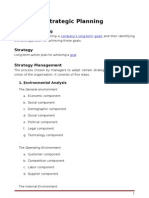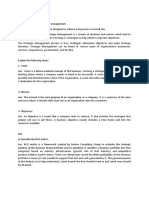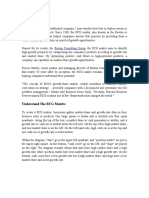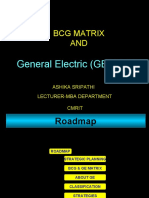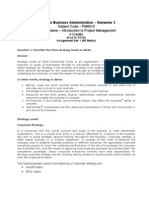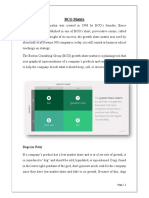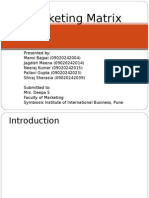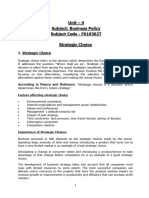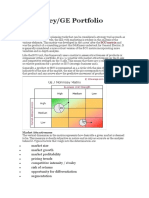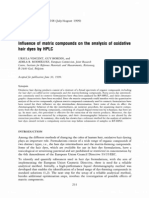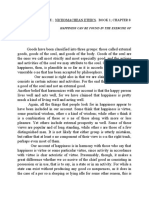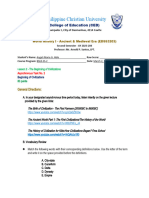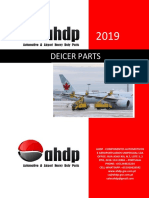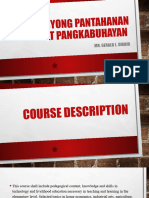0% found this document useful (0 votes)
15 views56 pagesUnit 4
The document discusses several strategic planning tools including scenario analysis, BCG matrix, Ansoff grid, and GE 9 cell matrix. Scenario analysis involves making assumptions about future business environments. The BCG matrix evaluates product lines based on market growth and market share. The Ansoff grid analyzes growth strategies like market penetration, product development, market development, and diversification. The GE 9 cell matrix is used to prioritize investments across business units based on industry attractiveness and business strength.
Uploaded by
Avanish BajpaiCopyright
© © All Rights Reserved
We take content rights seriously. If you suspect this is your content, claim it here.
Available Formats
Download as PDF, TXT or read online on Scribd
0% found this document useful (0 votes)
15 views56 pagesUnit 4
The document discusses several strategic planning tools including scenario analysis, BCG matrix, Ansoff grid, and GE 9 cell matrix. Scenario analysis involves making assumptions about future business environments. The BCG matrix evaluates product lines based on market growth and market share. The Ansoff grid analyzes growth strategies like market penetration, product development, market development, and diversification. The GE 9 cell matrix is used to prioritize investments across business units based on industry attractiveness and business strength.
Uploaded by
Avanish BajpaiCopyright
© © All Rights Reserved
We take content rights seriously. If you suspect this is your content, claim it here.
Available Formats
Download as PDF, TXT or read online on Scribd
/ 56




